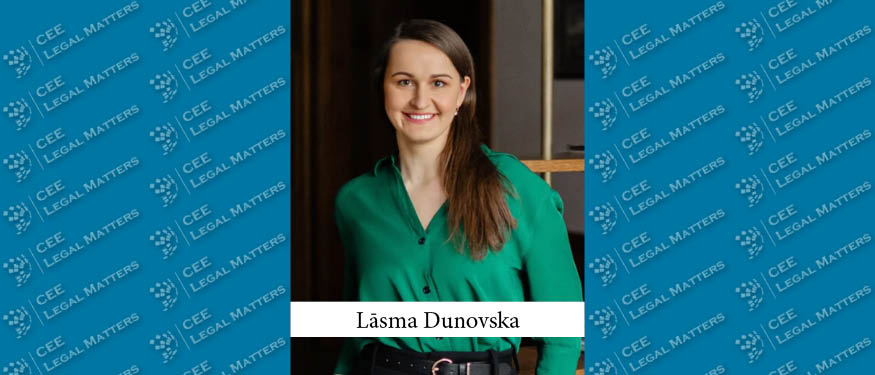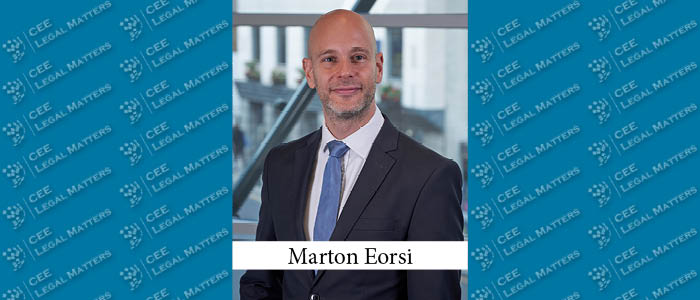The labor shortage issue has been a growing problem in the job market for a long time now. In the long-term employers are looking for ways to improve working conditions, to keep employees engaged and to attract new ones. One of the ways to fix the labor shortage issue is employee poaching. What are the legal and ethical aspects of employee poaching and how to lessen the risk of another job market recruiting employees?
Employees’ rights to freely choose their job and their workplace are one of employees’ basic rights, that is highlighted in the Constitution under Section 106. According to Section 106 of the Constitution, each person has the freedom to choose their work and workplace based on their qualifications. Under Article 106 of the Constitution, the right to freely choose one’s workplace and occupation means, firstly, equal access to the labor market for all individuals and, secondly, that the state may not impose restrictive criteria on individuals other than specific requirements of ability and qualifications necessary to perform the duties of the respective position.[1]
Legal aspects:
1. Restriction of competition
One of the most important legal aspects an employer should take into account when poaching employees is the restriction of competition that might be defined in the employees’ previous job contract. When an employer has decided to poach an employee, there is a risk that a restriction may be imposed for a period of up to two years on entering into employment relationships in a specific field of activity for the potential employee. The restriction of competition can only apply to the field of activity in which the employee was engaged during the term of the employment relationship. Such an agreement is valid only if all the prerequisites set out in the first paragraph of Section 84 of the Labor Law are simultaneously fulfilled:
- its purpose is to protect the employer from such professional activity of the employee which may cause competition for the commercial activity of the employer, taking into account the protected information of the employer at the disposal of the employee;
- the term for restriction on competition does not exceed two years from the day of termination of the employment relationship;
- it provides an obligation for the employer to pay the employee adequate monthly compensation for the compliance with the restriction on competition after termination of the employment relationship with respect to the whole time period of restriction on competition.
At the same time, Section 85, Paragraph 3 of the Labor Law provides the employee with the right to withdraw from the non-compete agreement in writing within one month from the date of notice of termination of the employment contract, if the basis for the termination is an important reason. In the case of termination by the employer, the employer may single-handedly withdraw from the non-compete agreement only before or simultaneously with the notice of termination. In other cases of termination of the employment relationship, the withdrawal must occur before the employment contract ends.
It’s recommended that the employer takes measures to identify what information is considered to be protected and take appropriate actions to ensure that this information is accessible only to those employees who actually need it to perform their job responsibilities, thereby protecting against the risk that this protected information could fall into the hands of competitors.
2. Know-how
In the case of employee poaching, an employer could lose knowledgeable and competent employees who are familiar with the specifics of the company’s business operations and, thanks to the knowledge they have acquired, are able to successfully and productively perform their work duties in the company. To prevent a situation where the previous employer’s company would suffer in the event of the poaching of competent employees, it is recommended that employers set out in their job description or internal rules a specific procedure for transferring know-how to a new employee in the event of termination of employment. It is also important that the company has a developed know-how transfer control mechanism.
The Trade Secrets Protection Law also covers the protection of know-how as a trade secret if such know-how has commercial value, for instance, if its unlawful acquisition, use, or disclosure could harm the interests of the person who legally controls it by undermining that person’s scientific or technical potential, business or financial interests, strategic positions, or competitiveness.
3. Prohibition of disclosure of confidential information
Confidential information is a broader concept than a trade secret, encompassing not only information containing trade secrets but also any information designated as non-disclosable under legislation or agreements, including information that lacks commercial value. In other words, not all confidential information qualifies as a trade secret, but every trade secret is considered confidential information.[2]
Often the disclosure of confidential information can harm the company and people to whom this information is addressed or to whom it is applicable. To protect confidential information accessed by the company and its employees from being disclosed to other companies or individuals, it is important to take preventive measures in advance. This includes agreeing on the rules for using confidential information and the consequences of its unlawful disclosure or transfer. Such measures should also include a prohibition for the employee to disclose confidential information in their possession even after the termination of the employment relationship. Meanwhile, the new employer must take into account that the new employee is not entitled to use the confidential information of their previous employer, and the use of such information may cause both material and non-material harm.
4. Trade secret
According to the first paragraph of Section 83 of the Labor Law, an employee has the duty not to disclose any information brought to his or her knowledge, which is a commercial secret of the employer. The employer has the duty to indicate in writing what information is to be regarded as a commercial secret. This obligation of the employer can only be deemed fulfilled when the relevant information is clearly defined, rather than, for example, stating that any information the employee accesses during the course of employment is to be regarded as a trade secret.[3] However, for the employer’s information to qualify as a trade secret, it must meet the criteria listed in the first paragraph of Section 2 of the Trade Secret Protection Law, which defines a trade secret as undisclosed information of an economic nature, technological knowledge, and scientific or any other information which conforms to all of the following requirements:
1) it is secret in the sense that it is not generally known among or available to persons who normally use such kind of information;
2) it has actual or potential commercial value because it is secret;
3) the trade secret holder, under the circumstances, has taken appropriate and reasonable steps to maintain secrecy of the trade secret.
The employer is advised to take the necessary measures to protect their trade secrets and ensure that information qualifying as the employer’s trade secret is accessed only by employees who need it to perform their job duties.
5. Intellectual property
As part of their job duties, an employee may create works of authorship, such as computer programs, advertising content, various design-related works, books, articles, and more. The employee is compensated for creating such works through their salary and provided with social security benefits.
According to Article 12 of the Copyright Law, if an author has created a work performing his or her duties in an employment relationship, the moral and economic rights to the work shall belong to the author, except for the property rights to computer programs created by the author. In accordance with the second paragraph of this article, these rights belong to the employer unless otherwise specified in the agreement. The employer acquires the right to use the work from the moment it is created, for the purpose for which it was made and to the extent necessary for that purpose, unless otherwise specified in the employment agreement. The author may agree with the employer to transfer the economic rights to the employer.
To prevent a situation where an employee, upon termination of the employment relationship—such as in cases of being poached by another employer—leaves with completed works or projects and later uses them for other purposes, including in the interest of a new employer, the transfer of the author’s economic rights and other aspects of copyright transfer should be specified in the employment agreement or a separate agreement. It is common for employment agreements or separate arrangements between employers and employees to include provisions on the transfer of economic rights to works or projects created as part of the employee’s job duties. This means the employee assigns their economic rights to specific works to the employer, who acts as the commissioner, and the employee no longer holds economic rights to the respective intellectual creations.
Accordingly, a new employer must ensure that the employee does not use works created under a previous employer in their current role and must prevent the use of intellectual property to which economic rights have been transferred to the former employer. Using such works could result in legal consequences.
6. Agreement on Professional Training or Qualification Improvement
Employers focused on development increasingly invest resources in employee education and training, as practice shows that the more competent and knowledgeable an employee is, the greater profit they bring to the company.
At the same time, if professional training or qualification improvement activities are considered related to the employee’s job duties but are not essential for the fulfillment of their contractual obligations (e.g., enhancing the employee’s competitiveness), it is recommended that the employer conclude a separate agreement with the employee. This agreement should cover professional training or qualification improvement and the reimbursement of associated costs. In such cases, the employer is entitled to request reimbursement of expenses incurred for the employee’s professional training or qualification improvement if the employee terminates their employment before the end of the agreement term, except where the termination is due to a significant reason. According to Section 96, Paragraph 4 of the Labor Law, such an agreement between the employer and employee regarding training is permissible only if it meets the following criteria:
- the employee agrees to participate in the professional training or qualification improvement;
- the term of the agreement does not exceed two years from the date the educational document certifying the training or qualification improvement is issued;
- the term of the agreement is proportionate to the cost of the professional training or qualification improvement;
- the amount of money the employee must reimburse does not exceed 70% of the total expenses for the training or qualification improvement;
- In the event of employment termination before the agreement term expires, the reimbursable amount is reduced proportionally to the number of days the employee has worked after the start of the agreement term.
Such an agreement must be concluded in writing and include provisions specifying the term of the agreement, the maximum amount of expenses the employer will cover for professional training or qualification improvement, a detailed description of the training or qualification improvement (type, location, duration, etc.), and the procedure for offsetting the employer’s expenses related to the training or qualification improvement.
At the same time, Section 96, Paragraph 6 of the Labor Law specifies that such an agreement is invalid if it is concluded with: a minor, a person with limited legal capacity due to mental health or other health issues, during the probation period, or regarding professional training or qualification improvement that the employer is legally obligated to provide with laws and regulations.
The employer must take into account that if the total expenses for professional training or qualification improvement during a year do not exceed the national minimum salary, the employer has no right to demand reimbursement for such expenses. The exception is if the employee terminates the employment contract during the period when the professional training or qualification improvement is being carried out based on the agreement between the employer and the employee, or if the employee unlawfully discontinues the training or qualification improvement. In such cases, the employer has the right to demand reimbursement of all actual expenses related to the professional training or qualification improvement that cannot be recovered from the service provider. The employer also retains this right in cases where the employment contract is terminated due to the following reasons:
- the employee has significantly breached the employment contract or workplace rules without a justified reason;
- the employee has acted unlawfully during of their duties, resulting in a loss of the employer’s trust;
- the employee, when performing work, has acted contrary to moral principles and such action is incompatible with the continuation of employment relationship;
- the employee has performed their duties under the influence of alcohol, drugs, or toxic substances;
- the employee has grossly violated occupational safety regulations, endangering the safety and health of others;
- the employer has terminated the employment contract due to valid reasons.
If the total expenses for professional training or qualification improvement during a year exceed the national minimum salary, the employer has the right to demand reimbursement from the employee for the portion of expenses that exceed the national minimum salary.
7. Secondary Employment
Employers should be aware that, in cases of employee poaching, a potential employee may choose to take on secondary employment to earn additional income while maintaining their current employment relationship. According to Section 92 of the Labor Law, an employer may restrict an employee’s right to engage in secondary employment to the extent that such restrictions are justified by the employer’s legitimate and protectable interests. This is particularly relevant if the secondary employment negatively affects or could affect the proper fulfillment of the employee’s obligations. Considering the above, restrictions on secondary employment may be included in the employment contract. However, such restrictions must be justified by the employer’s legitimate and protectable interests. Examples of such interests include the prevention of undesirable competition that could raise doubts about the employee’s loyalty.[4]
8. No-poach agreement
Employers should refrain from addressing employee poaching challenges through non-poaching agreements. A non-poaching agreement refers to an arrangement—formalized in writing, orally, or through coordinated practices—between competing market participants concerning employee recruitment terms. Examples include agreements not to hire each other’s employees or to coordinate salary levels offered to employees. Such agreements are prohibited under Section 11 of the Competition Law. Section 11 stipulates that agreements which aim to prevent, restrict, or distort competition in Latvia, or have such effects, are forbidden and invalid from the moment of their conclusion. These include agreements related to:
- the direct or indirect determination of prices, tariffs, or their formation principles, as well as the exchange of information concerning prices or sales terms;
- market allocation based on territories, customers, suppliers, or other conditions.
Non-poaching agreements restrict competition in the labor market, limiting employee mobility and opportunities for fair compensation.
It is important not to confuse non-poaching agreements with the competition restriction agreements provided for under Section 84 of the Labor Law. The latter aim to protect the employer from an employee engaging in professional activities that could compete with the employer’s business, and do not constitute a restriction on market competition.
Ethical aspects:
An employer who engages in poaching employees should be aware that such employees may not always be loyal and reliable. At the first opportunity, upon receiving a better offer, they might terminate their employment contract. This can create an unstable situation within the company and disrupt the work environment among existing employees.
Furthermore, if the company employs unethical methods in poaching employees, it may harm the company’s reputation and image in the long term, potentially leading to a negative public reputation.
Therefore, it is worth considering how to retain employees in the long term and foster a desire among new employees to join the company.
Employers focused on sustainable development continuously seek new ways to improve the work environment to retain current employees and attract new talent to their teams. Therefore, it is crucial to identify which employee recruitment methods can be considered ethical and acceptable.
One approach is the introduction of more flexible working arrangements. Following the COVID-19 pandemic, remote work has become increasingly popular, allowing employees to work from anywhere. This flexibility enables employees to better balance their personal and professional lives. Additionally, during the summer season, employers whose business operations allow it are encouraged to implement a four-day workweek or shortened Fridays, giving employees the opportunity to fully enjoy the summer and return to work more energized and productive.
Equally important is organizing and funding various employee development initiatives, such as seminars, courses, and conferences, to keep employees motivated. Employees focused on growth and self-improvement are likely to bring greater value to the company. Moreover, according to Section 96 of the Labor Law, an employer and employee may enter into an agreement regarding training. If an employee resigns, the employer has the right to require reimbursement for the costs of professional training or qualification enhancement if the resignation occurs before the agreed-upon term expires—except when the resignation is due to important reasons. Such agreements can only be made if the training is not essential for the performance of the agreed-upon work. This type of agreement offers additional assurance to the employer by encouraging employees to carefully consider their decision before changing jobs during the agreement’s effective period. It is important to note that the duration of such an agreement cannot exceed two years and must be proportionate to the employer’s expenses.
Another way to retain employees in the long term and attract new ones is through the employee stock option mechanism provided under Section 248.1 of the Commercial Law. Implementing employee stock options incentivizes employees to achieve better results since holding a share in the company makes them more invested in its success. Better company performance means increased profits, part of which employees can receive as dividends. Stock options allow a company to issue shares that can be acquired, either for payment or free of charge, by employees, board members, or council members of the company or affiliated companies within the same group. It is important for employers to establish clear criteria for employees to qualify for stock options. By introducing employee stock options, employers can foster a loyal and committed workforce, dedicated to maximizing company profits.
To retain existing employees and attract new ones, employers should also consider offering health insurance and making contributions to employee pension funds.
Summary
In a competitive market, employees often receive competing offers from potential employers. Under typical market conditions, employees can leverage such offers to negotiate higher compensation with both their current and prospective employers, thereby fostering career advancement and growth.
However, there are several legal aspects that the current employer should consider to ensure that the employee is not poached. In cases where an employee decides to start a new employment relationship with another employer, measures should be taken to protect the company’s confidential information and trade secrets, retain intellectual property within the company, and avoid any legal consequences or reputational damage for the potential employer.
Given that “no-poach” agreements—where competing market participants agree not to hire each other’s employees or coordinate employee compensation—are considered illegal, employers can utilize legal tools to protect their business and information. These include agreeing with the employee on non-compete restrictions for a period not exceeding two years after the termination of employment, ensuring the transfer of intellectual property rights, and maintaining the confidentiality of trade secrets. Equally important is providing employees with a positive work environment, motivating them using various tools such as fair compensation, opportunities for professional and personal development, and flexible work arrangements, among others.
For the new employer, it is crucial to consider whether the potential employee is bound by obligations and restrictions agreed upon with their previous employer and ensure that these commitments are not violated. To ensure the poaching process aligns with ethical standards, the new employer should verify the loyalty of the prospective employee, assess whether their recruitment might impact the company’s reputation, and adopt sustainability-oriented measures.
Each of these legal tools involves specific nuances that should be taken into account. Therefore, consulting legal professionals to identify the most appropriate solutions for the specific situation is advisable.
[1] 20th of May 2003 Constitutional Court Judgment in Case No 2002-21-01
[2] Judgment of the Senate of 22nd of December 2022 in Case No C33369520, SKC-188/2022, ECLI:LV:AT:2022:1222.C33369520.11.S
[3] Judgment of the Senate of 22nd of December 2022 in Case No C33369520, SKC-188/2022, ECLI:LV:AT:2022:1222.C33369520.11.S
[4] Judgment of the Senate of 6th of July 2023 in Case No C29336821, SKC-138/2023, ECLI:LV:AT:2023:0706.C29336821.13.S
By Lasma Dunovska, Senior Associate, WIDEN

















